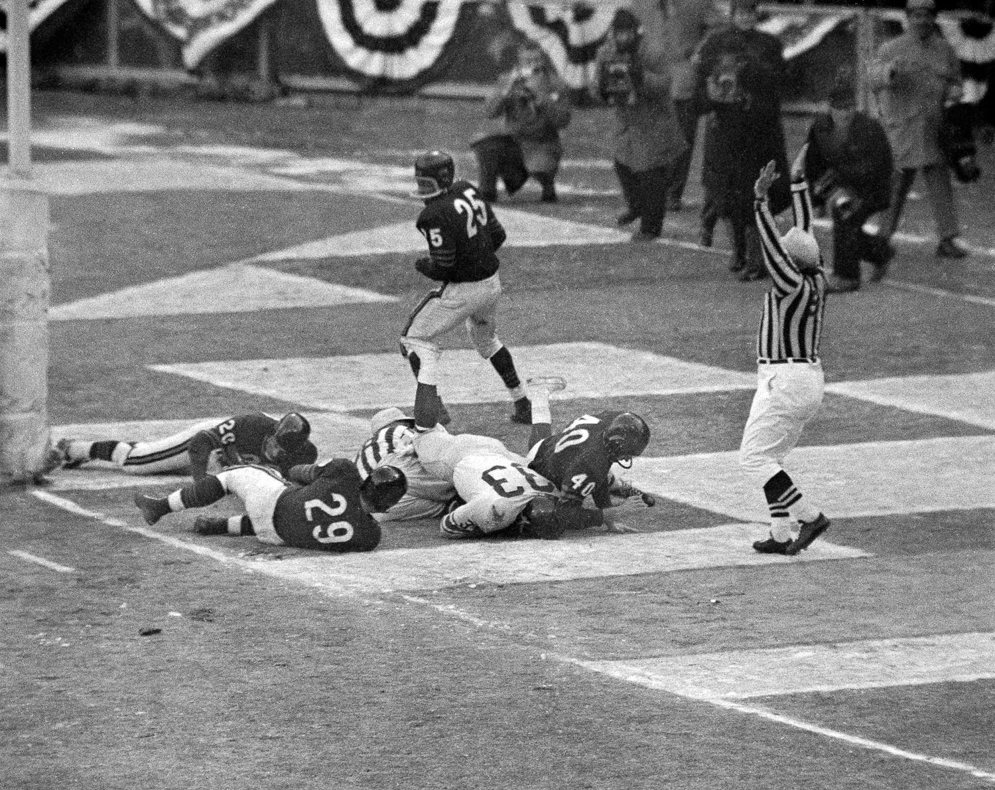Guide to the Officials' Signals
The NFL's familiar hand signals help fans better understand the game.
The NFL's familiar hand signals help fans better understand the game.
Today’s football fans know exactly what these gestures mean. They’re conversant in another language — the NFL’s officiating hand signals, which now number more than 35.

Umpire Sam Wilson signals for a touchdown in the 1956 NFL championship game between the Chicago Bears and the New York Giants. (AP Photo/Harry Harris)
These signals were developed to improve communication between the officials and the game’s growing audience. In football’s early days, officials simply shouted when calling a penalty or stopping play for a timeout or other reason. Spectators who couldn’t hear the official were often confused about what was going on.
As the game attracted more fans, both in the stadium and through radio broadcasts, those watching and listening wanted a faster way of knowing what was happening.
As with many early changes, the innovation started at the collegiate level and was later adopted by the NFL. The consistent use of hand signals can be traced to a 1929 college game between Syracuse University and Cornell University.
Before kickoff, the radio announcers for that game approached the referee, Elwood Geiges, with an idea to improve their broadcast: They asked Geiges to devise signals to let them know what penalties he was calling and why he stopped play.
Geiges came up with four simple signals: offside, holding, illegal shift and timeout.
When he stopped the action, Geiges looked to the broadcast booth and flashed the appropriate sign. The nonverbal communication enabled the announcers to better describe the action. As the signals became more commonly used in the college game, professional football adopted them as well.
Some signals used today — for a safety, a touchdown and holding — are similar to those used decades ago. Other early signs, such as folded arms to indicate that a team declined a penalty, were modified over time as newer signals were introduced.
For example, until 1955, officials used a military-type salute to call unnecessary roughness penalties. The American Legion asked the NFL to change the signal because children were confusing the football signal with the salute to the nation’s flag. When Legion officials quizzed elementary school students about the meaning of the salute, a 12-year-old boy responded: “That means unnecessary roughness.”
The NFL changed the signal to a wrist above the head, and later tweaked it to the personal foul signal used today: one wrist striking the other above the head.
The growth of the game on television led the league to equip officials with one more communication tool. The NFL gave referees microphones in 1975 so they could provide clarification on the field to teams, to broadcasters and to fans in the stadium and at home.